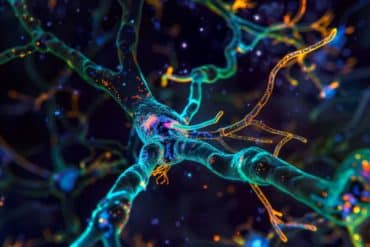Summary: People can unlock their creative potential and enhance their creativity by embracing frustration and using it as a tool to inspire new methods and ideas.
Source: Jacobs University
In order to complete a task or achieve a goal, humans can block their automatic or pre-potent reactions using the mental skill known as response inhibition. It entails operating in a more controlled and deliberate manner as opposed to responding to impulses, inclinations, or habits.
Response inhibition is characterized by behaviors like refraining from checking one’s phone during a meeting or refraining from responding aloud to a question in class without being asked.
Thinking creatively can be significantly impacted by emotions. Although previous studies highlighted the effects of emotional states on creativity, the interactions between specific affective, emotional states, and response inhibition remain elusive.
“Our current study extends our understanding of the distinct mechanisms of specific emotional states on divergent creative thinking and the associated responses in the context of response inhibition,” Khalil explained.

“Our data revealed that response inhibition mediates the effect of negative affect and fatigue and in fact, enhanced psychophysiological arousal on divergent thinking.”
People can unlock their creative potential and reach new heights of achievement by embracing irritation and using it as a tool to inspire fresh ideas and methods. This assumption can lead to interesting implications for the application of potential strategy-based findings in practice, such as education, industry, and politics, particularly when creativity and innovation are necessary. Nevertheless, creativity tasks are rarely systematically compared, therefore, further research is required in this respect.
While experiencing dissatisfaction can be frustrating, it can also be a strong catalyst for invention and creativity. “To sum up, we must encounter unpleasant consequences, but if we handle them differently and turn them into a motivator for our persistence, we may unleash our creative potential,” said Khalil.
About this psychology and creativity research news
Author: Daisy Juknischke-Heinsen
Source: Jacobs University
Contact: Daisy Juknischke-Heinsen – Jacobs University
Image: The image is in the public domain
Original Research: Closed access.
“Response Inhibition Partially Mediates the Relationship Between Emotional States and Creative Divergent Thinking” by Radwa Khalil et al. Creativity Research Journal
Abstract
Response Inhibition Partially Mediates the Relationship Between Emotional States and Creative Divergent Thinking
Why can some people generate outstanding creative ideas despite receiving frustrating feedback? Although previous studies highlighted the effects of emotional states on creativity, the interactions between specific psychophysiological emotional parameters or affective states and response inhibition (RI) on creativity remain elusive. Therefore, with this study, we aimed to investigate whether RI mediates the effects of emotional states on creative thinking, specifically divergent thinking (DT), while participants receive frustrating or encouraging feedback.
We induced positive and negative affect and psychophysiological arousal (PA) by manipulating feedback on performing a go/no-go task (GNGT), one of the standardized tasks for measuring RI. In other words, we provided participants with artificial feedback on GNGT to induce either frustration following (a negative emotional state) or a feeling of success (a positive emotional state). After receiving the manipulated feedback, participants performed the alternative uses task (AUT), a classical test for measuring DT.
Subjective affective states were assessed using the Positive and Negative Affect Scale — Expanded Form (PANAS-X). During AUT, PA was measured through skin conductance (SC) and heart rate variability (HRV). Our data revealed that RI mediates the effect of negative affect and fatigue and enhanced PA (measured through HRV) on DT.
Moreover, positive affect and PA (measured through SC) directly enhanced the three indices of DT (fluency, originality, and flexibility). Concerning the measurement of HRV, the application of time-domain HRV analyses was superior to that of frequency-domain HRV analyses. Notably, gender had strong direct and indirect effects on fluency and flexibility but not originality.
In conclusion, our results suggest distinct mechanisms for modulatory effects of specific emotional states and associated psychophysiological on divergent creative thinking.






